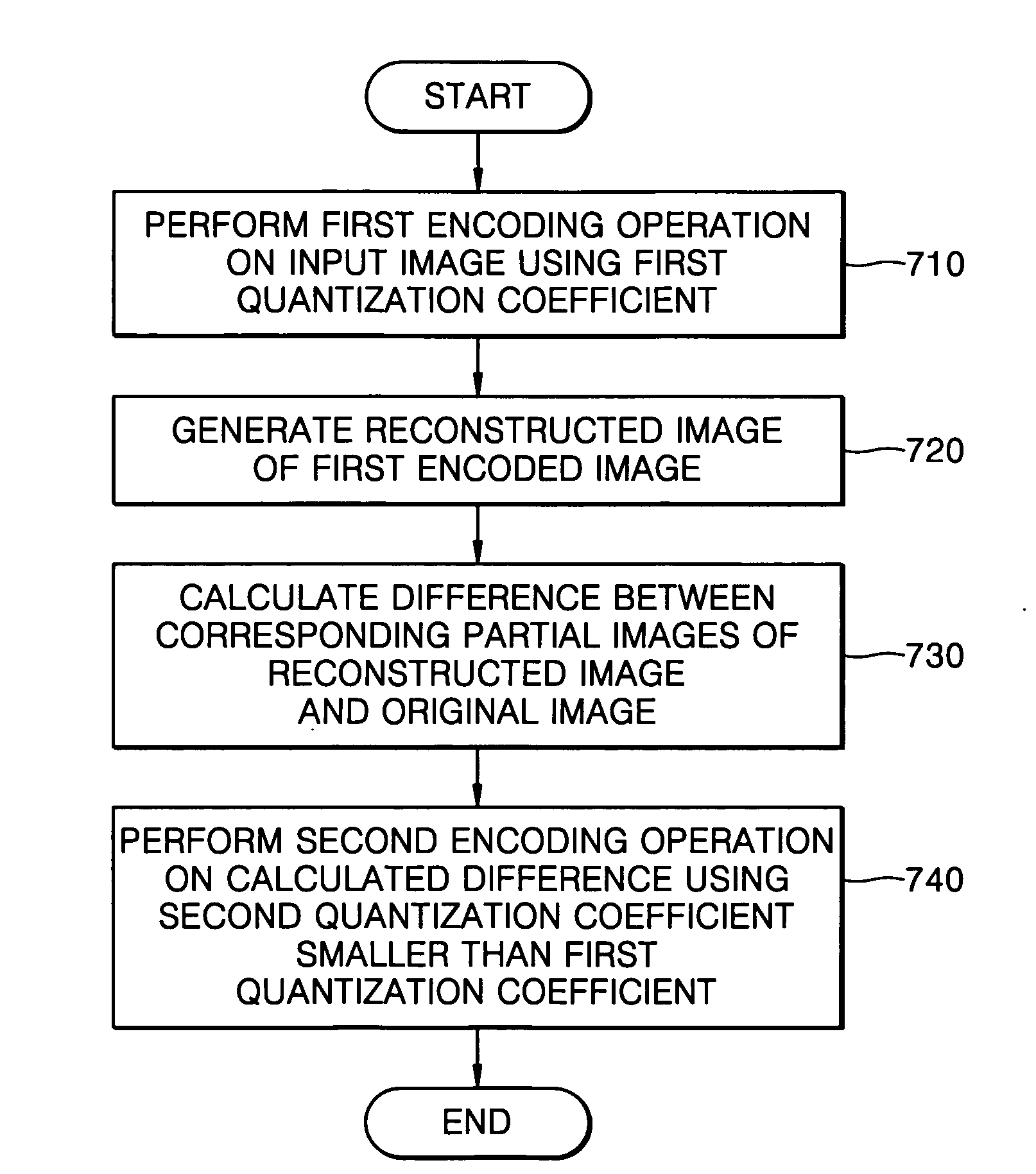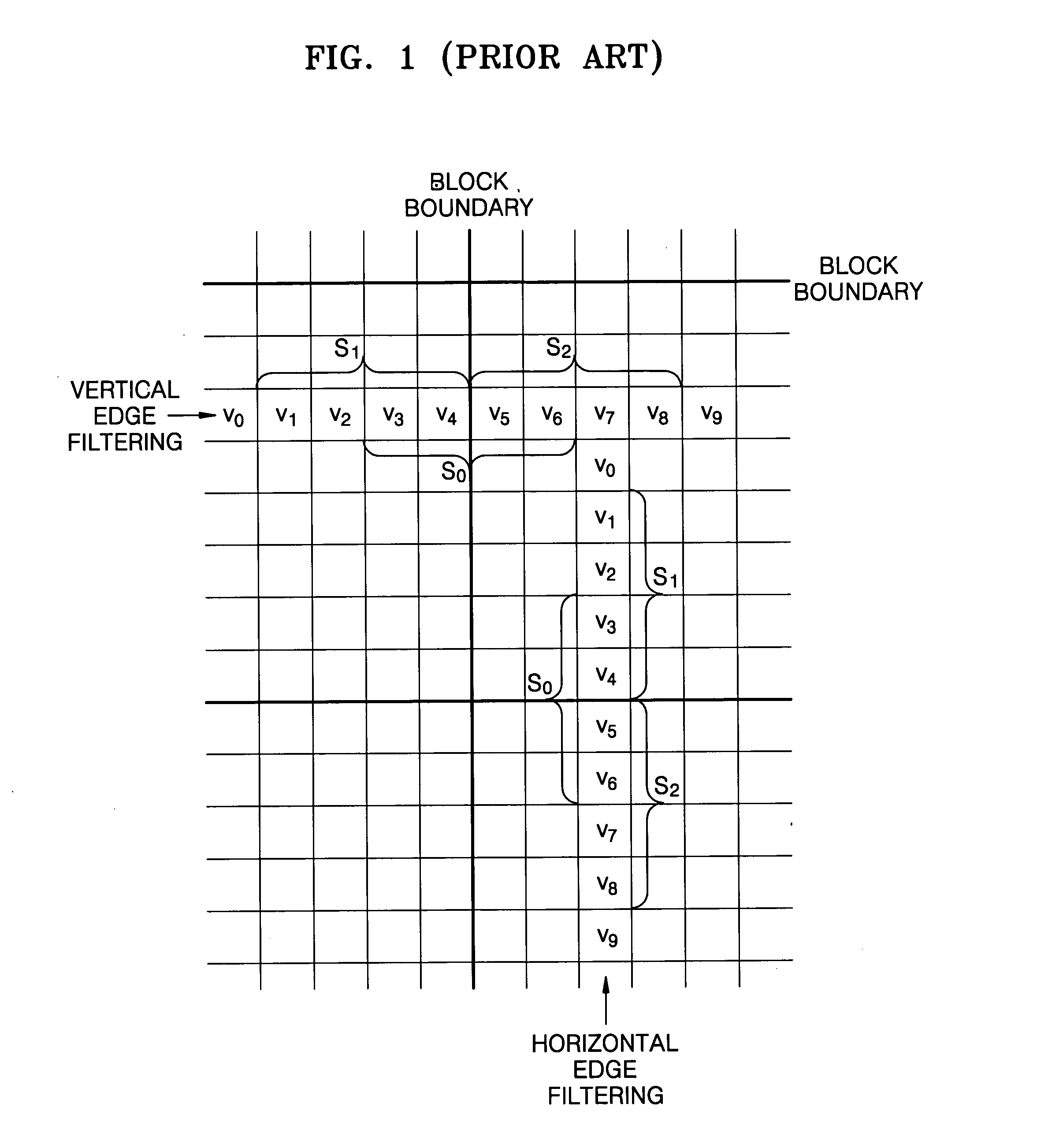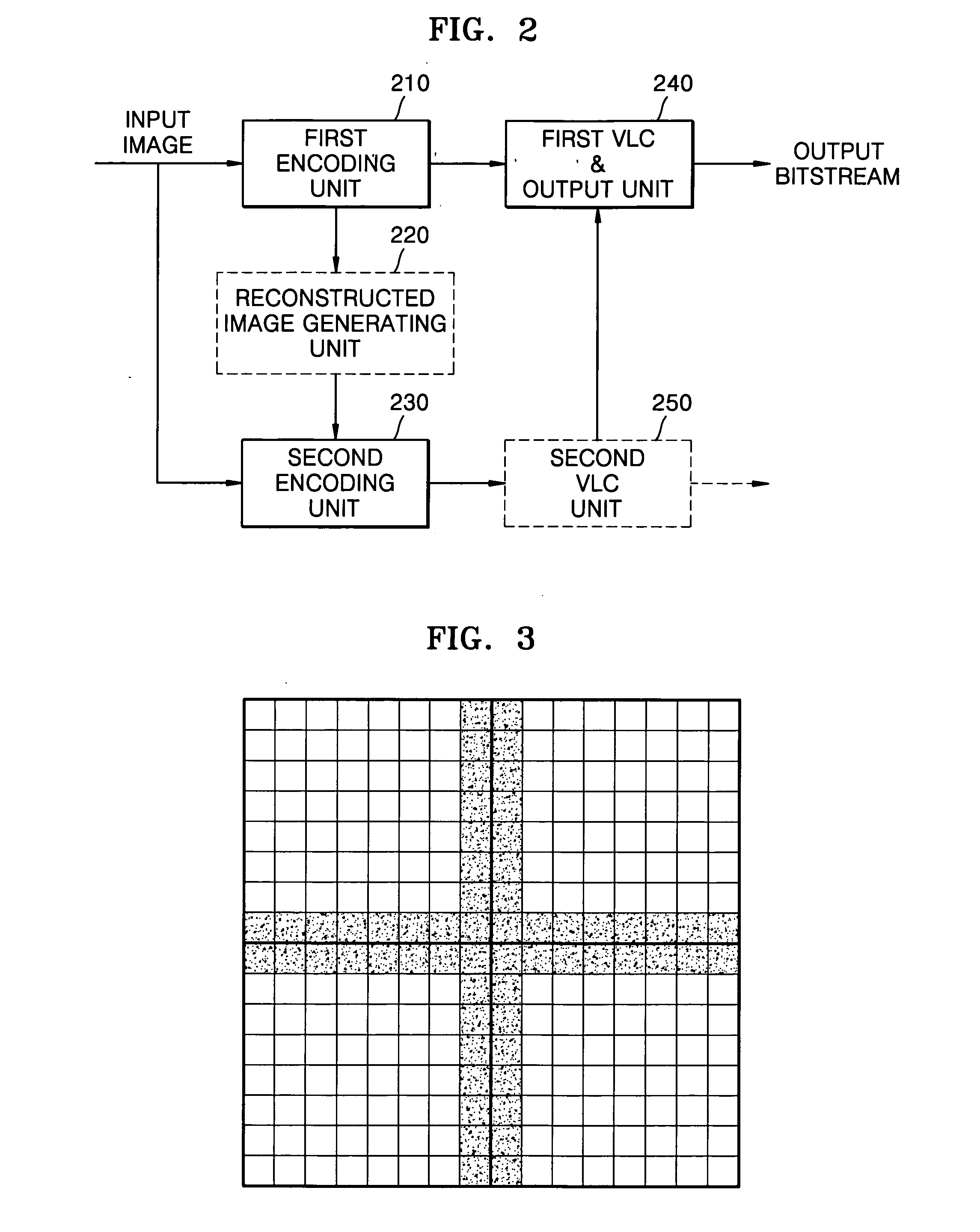Encoding and decoding apparatus and method for reducing blocking phenomenon and computer-readable recording medium storing program for executing the method
a technology of encoding and decoding apparatus and reducing blocking phenomenon, which is applied in the direction of electrical apparatus, instruments, computing, etc., can solve the problems of inability to eliminate the phenomenon fully, the conventional de-blocking method relying on a threshold value, and the inability to eliminate the phenomenon. to achieve the effect of reducing the blocking phenomenon
- Summary
- Abstract
- Description
- Claims
- Application Information
AI Technical Summary
Benefits of technology
Problems solved by technology
Method used
Image
Examples
Embodiment Construction
[0039] The present invention will now be described more fully with reference to the accompanying drawings, in which exemplary embodiments of the invention are shown. The invention may, however, be embodied in many different forms and should not be construed as being limited to the exemplary embodiments set forth therein; rather, these exemplary embodiments are provided so that this disclosure will be thorough and complete, and will fully convey the concept of the invention to those skilled in the art.
[0040]FIG. 2 is a block diagram of an encoding apparatus according to an exemplary embodiment of the present invention. Referring to FIG. 2, the encoding apparatus includes a first encoding unit 210, a reconstructed image generating unit 220, a second encoding unit 230, a first variable length coding (VLC) & output unit 240, and a second VLC unit 250.
[0041] The first encoding unit 210 encodes an input image using a predetermined first quantization coefficient and outputs first encoded...
PUM
 Login to View More
Login to View More Abstract
Description
Claims
Application Information
 Login to View More
Login to View More - R&D
- Intellectual Property
- Life Sciences
- Materials
- Tech Scout
- Unparalleled Data Quality
- Higher Quality Content
- 60% Fewer Hallucinations
Browse by: Latest US Patents, China's latest patents, Technical Efficacy Thesaurus, Application Domain, Technology Topic, Popular Technical Reports.
© 2025 PatSnap. All rights reserved.Legal|Privacy policy|Modern Slavery Act Transparency Statement|Sitemap|About US| Contact US: help@patsnap.com



